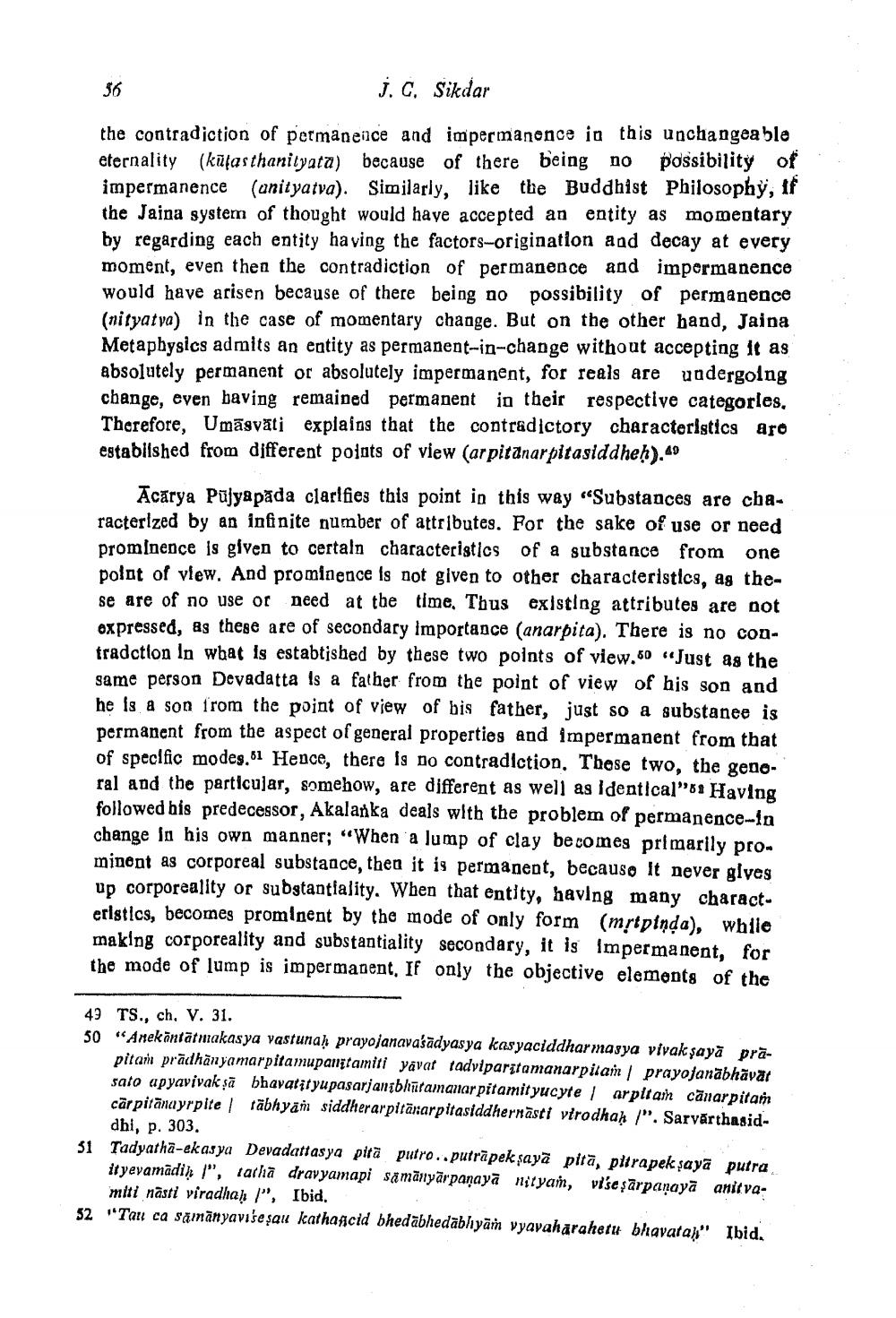________________
36
J. C. Sikdar
the contradiction of permanence and impermanence in this unchangeable eternality (külasthanityata) because of there being no possibility of impermanence (anityatva). Similarly, like the Buddhist Philosophy, if the Jaina system of thought would have accepted an entity as momentary by regarding each entity having the factors-origination and decay at every moment, even then the contradiction of permanence and impermanence would have arisen because of there being no possibility of permanence (nityatva) in the case of momentary change. But on the other hand, Jaina Metaphysics admits an entity as permanent-in-change without accepting it as absolutely permanent or absolutely impermanent, for reals are undergoing change, even having remained permanent in their respective categories. Therefore, Umasvati explains that the contradictory characteristics are established from different points of view (arpitanarpitasiddheḥ).40
Acarya Pujyapada clarifies this point in this way "Substances are characterized by an infinite number of attributes. For the sake of use or need prominence is given to certain characteristics of a substance from one point of view. And prominence is not given to other characteristics, as these are of no use or need at the time. Thus existing attributes are not expressed, as these are of secondary importance (anarpita). There is no contradction in what is estabtished by these two points of view.50 "Just as the same person Devadatta is a father from the point of view of his son and he is a son from the point of view of his father, just so a substanee is permanent from the aspect of general properties and impermanent from that of specific modes. 51 Hence, there is no contradiction. These two, the general and the particular, somehow, are different as well as identical" Having followed his predecessor, Akalanka deals with the problem of permanence-in change in his own manner; "When a lump of clay becomes primarily prominent as corporeal substance, then it is permanent, because It never gives up corporeality or substantiality. When that entity, having many characteristics, becomes prominent by the mode of only form (mrtpinda), while making corporeality and substantiality secondary, it is impermanent, for the mode of lump is impermanent, If only the objective elements of the
49 TS., ch. V. 31.
50 "Anekantatmakasya vastunaḥ prayojanavasadyasya kasyaciddharmasya vivakşaya prapitam pradhanyamarpitamupantamiti yavat tadviparitamanarpitam | prayojanabhävät sato apyavivak sa bhavatityupasarjan bhūtamanar pitamityucyte | arpitam canarpitam carpitanayrpite täbhyam siddherarpitanarpitasiddhernasti virodhaḥ ". Sarvarthasid
dhi, p. 303.
51 Tadyatha-ekasya Devadattasya pita putro..putrāpek saya pita, pltrapek saya putra ityevamadiḥ ", tatha dravyamapi samanyarpaṇaya nityam, viseşarpaṇaya anitvamiti nasti viradhaḥ ", Ibid.
52 "Tau ca sămānyaviseṣau kathañcid bhedabhedabhyam vyavaharahetu bhavatan" Ibid.




